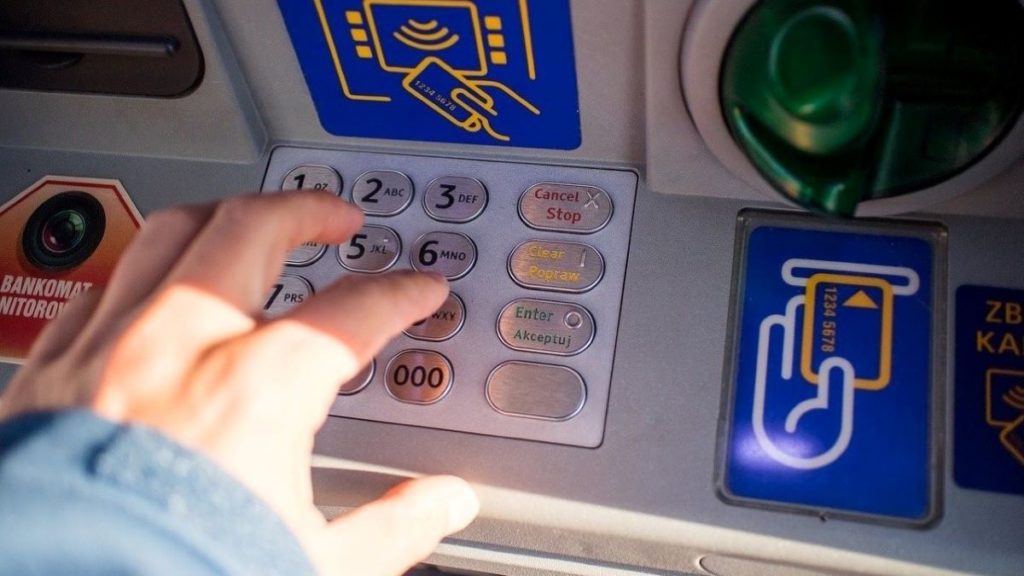Featured image by Michal Jarmoluk from Pixabay
For close to 50 years now, automatic teller machines (ATMs) have enabled users to conveniently access banking services. No longer must people wait in long lines inside banks. In fact, the main reason ATMs were developed was to reduce congestion in banks and avoid long working hours for bank staff.
Since their introduction, ATM usage has increased immensely. The machines are sophisticated and now serve as important points for accessing cash and other banking services.
RELATED ARTICLE: WITH OVERDRAFT CHARGES BANKS WIN AND YOU LOSE: DON’T BE A VICTIM
Their ability to offer additional ATM solutions has seen them serve as complementary channels to mobile, branch, and banking. For example, people can reload prepaid mobile phones, buy stamps, transfer charitable donations, exchange currency, and apply for a credit card at these machines. As the banking industry gets more competitive, banks should manage ATM cash distribution networks.
Here are seven reasons why this is a necessity:
1. To Reduce Pressure in Banking Halls
In the absence of an ATM network, banks experience high traffic inside their facilities, hindering efficient service delivery. Customers are forced to wait in line for extended periods of time. The high demand for services also causes bank staff to be overstretched. Banks need to monitor business volumes and establish ATM cash distribution networks. This reduces pressure in banking halls.
The higher the business volume, the more extensive of an ATM network a bank needs. Ideally, banks should increase the number of automated teller machines and manage their cash distribution as their customer volumes grow. This keeps pressure inside their facilities at minimal levels. Strategic points where banks should consider installing ATMs are seaports, malls, farmer’s markets, airports, institutions of higher learning, and bus terminals.
2. To Reduce Cash Transportation Costs
Automated teller machines need to be serviced with cash every so often in order to serve customers efficiently. In areas where banks don’t have branches, the cash has to be delivered by armored trucks and added to the ATM. Some banks are adopting new methods to reduce this cost.
They do this by allowing customers to deposit cash in the machines without using envelopes. Then the machine can disperse the same cash during withdrawals. Banks that use such systems are able to recycle cash customers have deposited. This method leads to greater security and lower cash distribution costs.
3. To Keep Cash Levels at Optimum
ATMs cannot run or serve customers efficiently unless banks manage them properly. Banks need to ensure that cash caskets are refilled on time. They also need to update their ATM software regularly and resolve other technical issues that can affect their operations.
When banks manage their ATM cash distribution networks, they ensure that optimal cash levels are maintained in the machines at all times. Updated ATM software enables them to gather data from customers’ transaction histories and use that data to predict cash demands. The data gives insights on when cash demand is likely to be high. It can also depict general trends and identify any other factors that may affect demands for cash.
4. To Maintain Physical Presence
Banks can maintain physical presence in areas where they don’t have a branch presence by managing vibrant ATM cash distribution networks. Setting up a bank branch is far more costly than managing an ATM network. Just like branches, ATM cash distribution networks serve as reliable structures for maintaining cash availability and physical presence. Increasingly, banks are taking advantage of surcharge-free outsourcing opportunities at convenient locations to facilitate customer access to banking services.
Besides having a presence in areas where they have no branches, banks can boost their visibility by managing a good ATM cash distribution network. This helps with marketing their brand to the public. Some banks allow customers who hold cards from other banks to transact on their ATMs. This makes it easy for their marketing department to generate customer leads. For example, the bank can prompt non-customers to join the bank by placing footnote messages on transaction slips.
5. To Offer Customers Value-Added Services
When banks to manage ATM cash distribution networks they can provide supporting services to their customers. These services include bill payments, utility payments, and deposits. Providing these services via ATM points is convenient for customers and an additional source of revenue for banks.
With the emergence of mobile money platforms, banks are increasingly collaborating with mobile money companies. They must do so in order to distribute cash to customers from ATMs to mobile wallets. By leveraging these platforms, banks are able to serve a higher percentage of customers.
6. To Give Customers Convenience
By managing ATM cash distribution networks, banks ensure that customers enjoy convenience in accessing banking services. ATMs offer banking services around the clock. This allows customers to access services anytime they need them, without being limited by banking hours.
ATMs are often located within bank premises. But they are also available in strategic locations where customers can access them conveniently. These include bus terminals, railway stations, airports, and markets. Managing ATM cash distribution networks also allows customers to transact with their accounts from other towns, since they do not need to do so within host branches.
7. To Reduce Cash Holding Risks
Banks incur high costs when they choose to hold large amounts of money in their vaults. In addition to these costs, the risks associated with holding cash are high. When banks manage ATM cash distribution networks well, they reduce the cost of holding money. Since ATMs are managed by other companies, using them to disperse and even receive payments allows banks to transfer risks associated with cash handling to third parties.
Final Thoughts
ATMs are modern cash dispensing machines now available on nearly every street corner. Customers can find them in retail stores, transport hubs, and on most bank buildings today. They provide customers with the convenience of accessing or depositing cash, anytime, any day. ATMs also enhance efficiency in the provision of banking services.
ATM lines aren’t as long as those in banking halls. Customers can deposit, withdraw cash, and even pay bills at ATMs. These machines also help banks minimize cash holding risks and reduce cash handling costs. To ensure that customers continue to enjoy these benefits, banks should manage their cash distribution networks.


